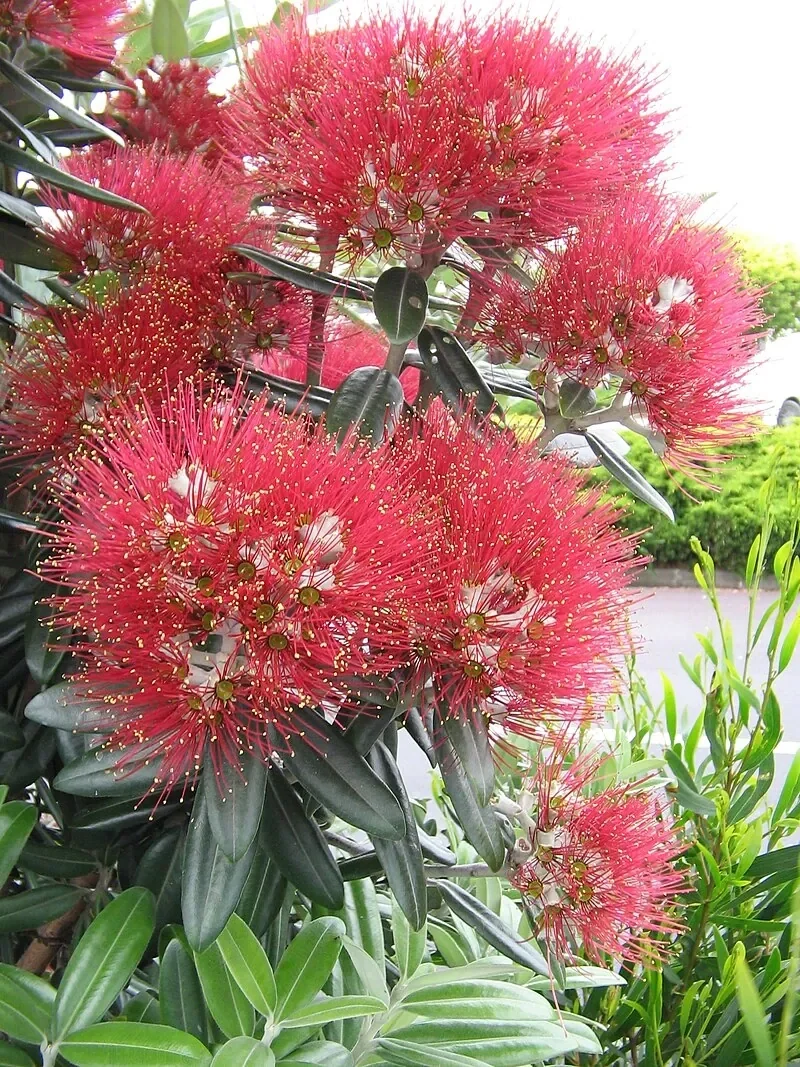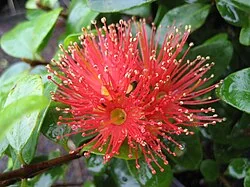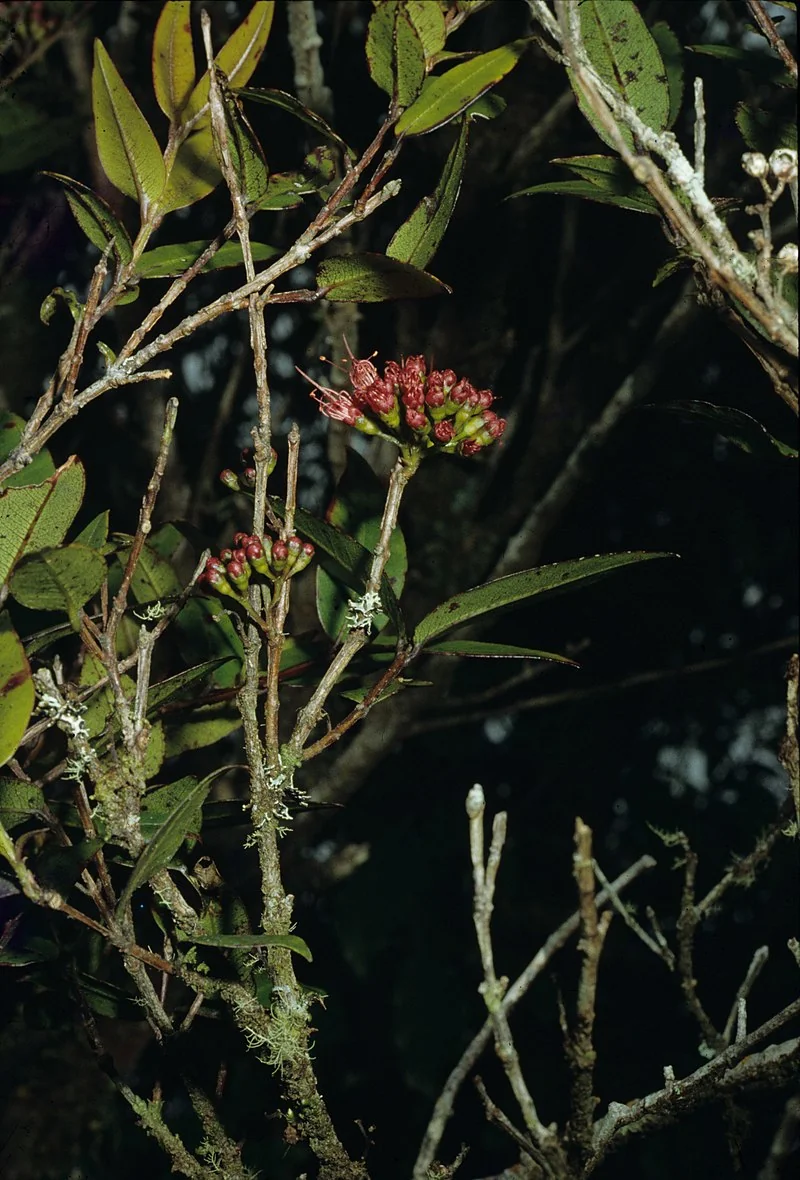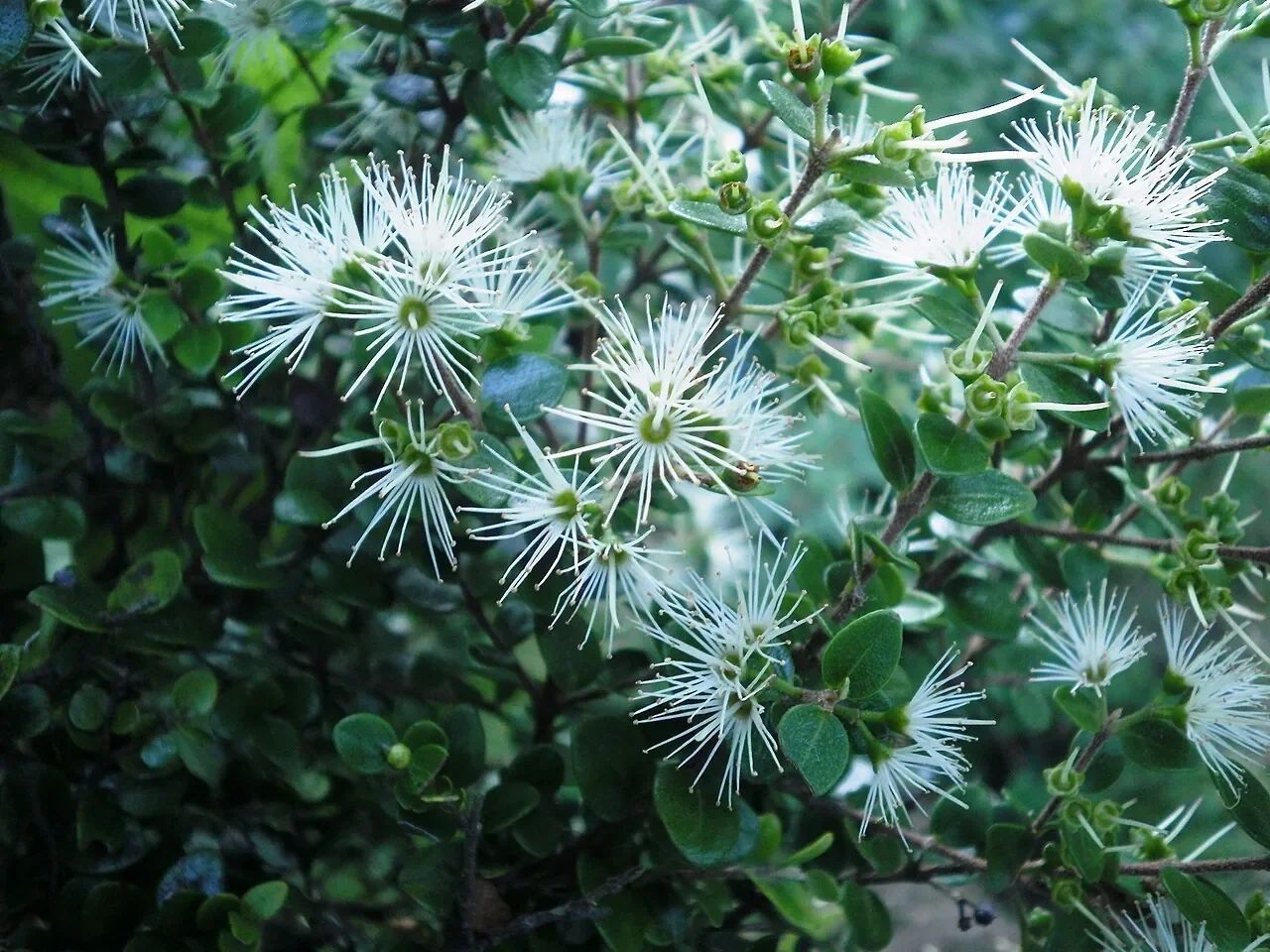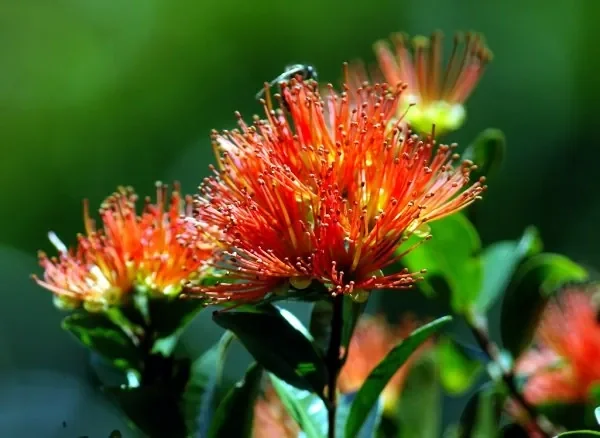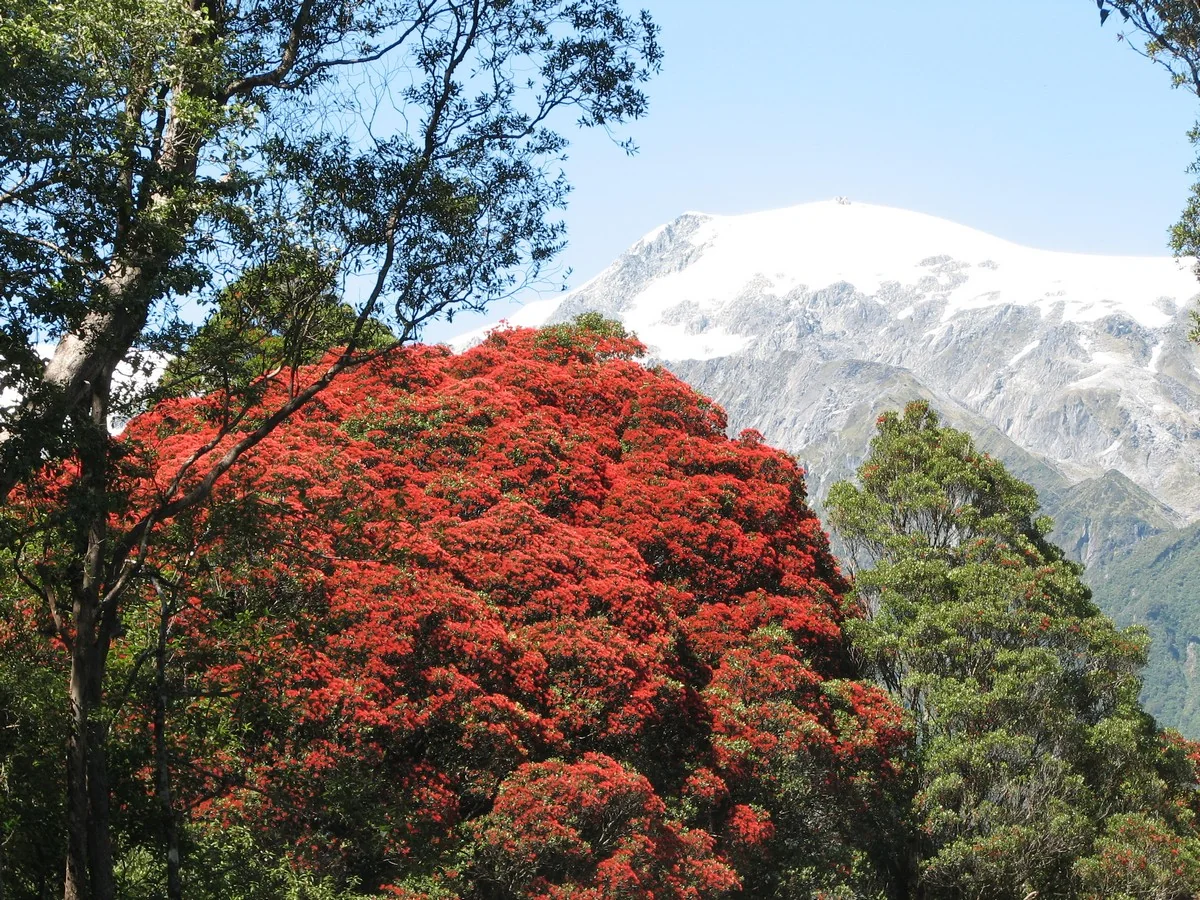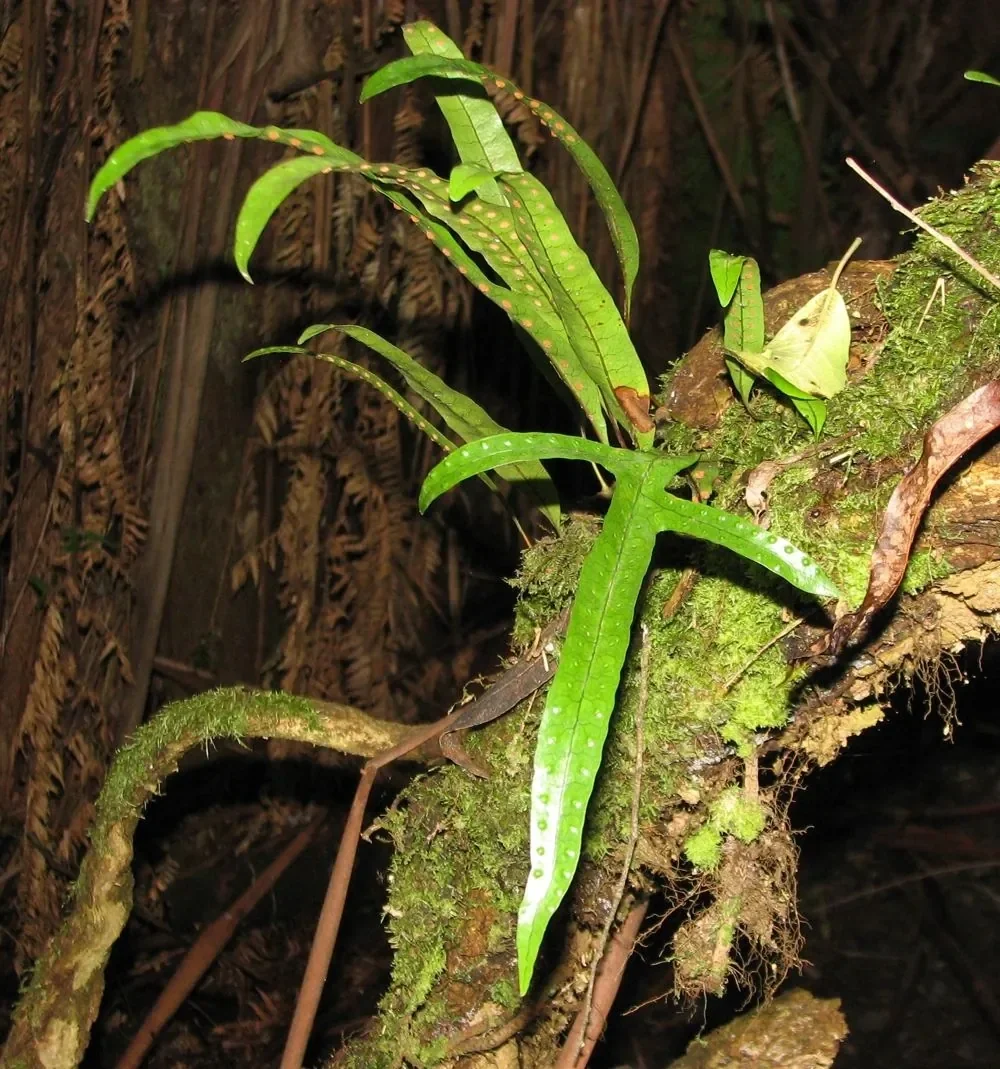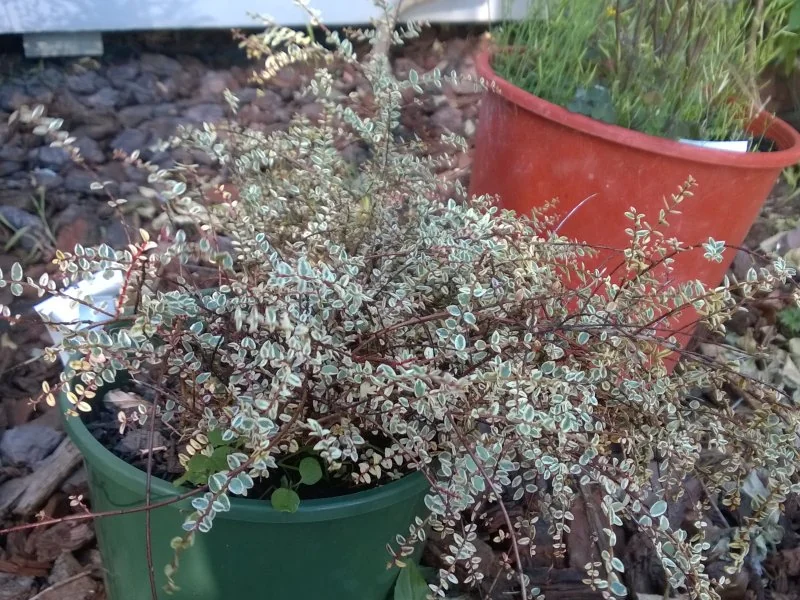
White Rata
Metrosideros diffusa
This native plant, known as White Rata (scientific name: Metrosideros diffusa), is a remarkable species endemic to New Zealand. It is characterized by its unique features, ecological role, and cultural significance. This comprehensive guide provides detailed information on its care, propagation, and importance within the New Zealand ecosystem. Understanding this plant contributes to the appreciation of our rich biodiversity and heritage. native trees

Plant Description
Botanical Features
White Rata (Metrosideros diffusa), also known as climbing rÂātÄā or akakura, is a forest liane or vine endemic to New Zealand. It can climb up to 6 meters tall and has small, shiny, evergreen leaves, typically up to 2 cm long, which are mostly rounded at the tip and often ranked on either side of the stem, lying in one plane. The bark is rusty red-brown to grey and separates into thick, squarish flakes. Flowering occurs from mid-spring to early summer, producing white or pale pink flowers that are attractive to pollinators such as bees, butterflies, birds, geckos, and moths. It is the most common climbing rÂātÄā in the wild, found naturally in lowland forests throughout New Zealand's North, South, and Stewart Islands.
Quick Facts
| Scientific Name | Metrosideros diffusa |
|---|---|
| Height | 15-20 m |
| Spread | 3-5 m |
| Water Needs | Moderate |
| Light | Full sun to part shade |
| Frost Tolerance | Moderate |
| Salt Tolerance | Moderate |
| Growth Rate | Medium |
| Lifespan | Long |
Climate Best Suited to
White Rata (Metrosideros diffusa) is primarily found in lowland to hilly forests across the North Island of New Zealand, extending to the Marlborough Sounds in the South Island. It demonstrates good adaptability to various conditions, thriving in areas with well-drained soils and tolerating both full sun and partial shade. Its natural distribution suggests a preference for warmer, more humid environments but with a reasonable tolerance for cooler temperatures found in its southern range.
Regional Suitability
| City | Climate Suitability |
|---|---|
| Whangārei | Ideal |
| Auckland | Ideal |
| Hamilton | Ideal |
| Tauranga | Ideal |
| Rotorua | Ideal |
| Gisborne | Ideal |
| New Plymouth | Ideal |
| Napier | Ideal |
| Whanganui | Ideal |
| Palmerston North | Ideal |
| Wellington | Ideal |
| Nelson | Ideal |
| Christchurch | Ideal |
| Dunedin | Moderate |
| Invercargill | Moderate |
Natural Habitat
White Rata is a common climbing vine found in lowland forests throughout the North, South, and Stewart Islands of New Zealand. It is a versatile plant that can be found in a variety of habitats, from coastal to montane regions. It is often seen climbing up tree trunks, over rocks, and on old logs. It is tolerant of a wide range of conditions, including sun and shade, and can be found in both wet and dry forests.
Plant Conservation
Metrosideros diffusa, commonly known as white rÄātÄā, climbing rÄātÄā, or akakura, is a forest liane or vine endemic to New Zealand. Its conservation status has varied. In 2018, it was classified as "Threatened - Nationally Vulnerable." However, the most recent assessment in 2023 (published in 2024) lists it as "Not Threatened." The primary threat to Metrosideros diffusa is myrtle rust (Austropuccinia psidii), an invasive fungus that impacts native myrtle species. This disease has led to a decline in the plant in certain regions, including Bay of Plenty, Waikato, and Taranaki. Browsing by possums and goats also poses a threat. While not widely cultivated, it can occasionally be found in specialist native plant nurseries.
Growing Requirements
Soil Requirements
White Rata (Metrosideros diffusa) is remarkably adaptable to different soil conditions, thriving in well-drained environments. It can tolerate a variety of soil types, from sandy to loamy, and prefers a neutral to slightly acidic pH. Good drainage is crucial to prevent root rot, ensuring healthy growth and development.
- Tolerates a wide range of soil types from clay to sandy
- Prefers well-draining soils but can handle occasional waterlogging
- Thrives in moderately fertile soils but will grow in poor soils too
- Can tolerate slightly acidic to slightly alkaline pH
- Handles coastal conditions including salt spray
Light Requirements
White Rata (Metrosideros diffusa) thrives in a variety of light conditions, from full sun to partial shade. Optimal growth and flowering are typically achieved in locations receiving ample sunlight throughout the day. However, it can also tolerate some shade, especially in hotter climates, where it benefits from protection during the most intense afternoon sun.
- Full sun for optimal growth and form
- Can tolerate partial shade but may develop a leggier form
- At least 6 hours of direct sunlight daily is ideal
- Northern or eastern exposures work well in garden settings
Water Requirements
Once established, White Rata (Metrosideros diffusa) is remarkably drought-tolerant, requiring minimal supplemental watering. During its establishment phase, consistent moisture is crucial to encourage strong root development. Mature plants can withstand dry periods, but regular watering during prolonged droughts will promote healthier growth and more abundant flowering.
- Moderate watering during establishment (first 1-2 years)
- Drought-tolerant once established
- Can handle periods of soil saturation
- Reduce watering in winter when growth slows
- Signs of overwatering include yellowing leaves and crown rot
Planting Guide
When to Plant
The best time to plant White Rata is during the cooler months, from autumn to early spring, to allow root establishment before summer.
How to Plant
- Dig a hole twice the width and depth of the plant's root ball.
- Mix compost into your existing soil at a 50/50 ratio.
- Backfill the hole so the top of the plant's roots are level with the surrounding ground.
- Firm the soil gently and water thoroughly.
- In heavy clay soils, plant on a raised mound and use gypsum clay breaker to improve drainage.
Ecological Role
White rÂātÄā (Metrosideros diffusa) is a wiry climber that threads through forest canopies, connecting strata and delivering nectar pulses that drive pollinator activity.
Pollination and Nectar
- Nectar resource: Seasonal flowering provides abundant nectar and pollen for insects and nectar-feeding birds.
- Flowering connectivity: Vines span gaps so blossoms appear across multiple canopy layers, increasing foraging efficiency for pollinators.
Habitat and Structure
- Canopy stitching: Twining stems bind branches and shrubs, adding structural complexity and small-fauna movement pathways.
- Microhabitats: Aerial roots and stems host mosses and invertebrates, enhancing epiphytic communities.
Resilience and Risks
- Disturbance response: Rapid regrowth after windthrow helps re-knit damaged canopies.
- Myrtle rust awareness: As a myrtle, may be vulnerable to Austropuccinia psidii; diverse, well-ventilated plantings improve resilience.
By feeding pollinators and tying together canopy layers, white rÂātÄā elevates biodiversity and stability in mixed forests.
Uses and Significance
Garden Uses
- Specimen tree for visual impact
- Suitable for native gardens and restoration projects
- Enhances native garden aesthetics and biodiversity
- Provides architectural accent with its unique structure
- Effective for erosion control on slopes and banks
Landscaping Ideas
Climbing RÂātÄā for Structure
- Trellis and arbours: Train on sturdy trellis or wires; its aerial roots cling to rough supports.
- Host planting: Pair with rough-barked trees for a naturalistic epiphytic look; avoid smothering small hosts.
- Mixed native screens: Combine with Hebe/Veronica, Pseudopanax, and Coprosma for layered texture.
- Containers with frames: Suitable in large tubs with an obelisk in mild climates.
Provide full sun to bright light for best flowering; moderate, even moisture in free-draining soil keeps growth balanced.
Seasonal Care Calendar
Spring
In spring, White Rata (Metrosideros diffusa) begins its active growth phase. New foliage emerges, and it's an ideal time for planting new specimens or propagating. Ensure adequate moisture and monitor for early signs of pests.
- New growth begins with fresh foliage development
- Apply a balanced, slow-release fertilizer if desired
- Excellent time for planting new specimens or dividing offsets
- Monitor for new pest activity and address promptly
Summer
Summer is the peak growing season for White Rata (Metrosideros diffusa), often accompanied by flowering. Consistent watering is important, especially for young plants, to support vigorous growth and prevent stress during dry periods.
- Flowering typically occurs in early to mid-summer (November-January)
- Water young trees regularly during extended dry periods
- Avoid heavy pruning during the active growing season
Autumn
During autumn, White Rata (Metrosideros diffusa) prepares for the cooler months. Fruits or berries develop, providing food for native birds. It's also a good time for planting and general garden cleanup.
- Fruits or berries develop and ripen (December-February), attracting birds
- Natural leaf shedding occurs as part of its growth cycle
- Good time for planting new specimens to establish before winter
- Clean up fallen leaves if a tidy appearance is desired
Winter
Winter is typically a dormant period for White Rata (Metrosideros diffusa). Minimal care is required, though young plants may benefit from protection in colder regions. This is an opportune time for any necessary structural pruning.
- Generally dormant with minimal growth activity
- No special winter protection needed in most mild climates
- Suitable time for structural pruning if required
- Fallen leaves can be left as mulch or removed for tidiness
When to Prune and How Much
White Rata (Metrosideros diffusa) generally requires minimal pruning to maintain its natural form and health. Pruning should focus on removing dead or damaged growth and shaping the plant as needed.
- Remove dead, damaged, or diseased branches at any time of year
- Light formative pruning when young helps establish good structure
- To create a multi-trunked specimen, cut the main stem to encourage branching
- Fallen leaves can be removed for a tidier appearance, or left as natural mulch
- If necessary, lower branches can be removed to create clearance underneath
- Major pruning is best done in late winter to early spring before new growth
Always use clean, sharp tools for pruning to minimize the risk of disease and ensure clean cuts. The plant often responds well to pruning with vigorous new growth, contributing to a fuller, healthier appearance.
How to Grow White Rata
From Seed
Propagating White Rata (Metrosideros diffusa) from seed is a rewarding process, though it requires patience. Start by collecting seeds from the ripe capsules in autumn. The fine, dust-like seeds should be sown on the surface of a well-draining seed-raising mix. Do not cover the seeds with soil. Water the tray gently by misting and place it in a warm, sheltered spot with bright, indirect sunlight. Germination can be slow, taking several months. It is crucial to maintain consistent moisture levels without waterlogging the soil. Once the seedlings are large enough to handle, carefully prick them out into individual pots. Use a deep pot to accommodate the plant's developing taproot. Grow them on for a year or two before planting them in their final position.
From Cuttings
White Rata can also be grown from semi-hardwood cuttings, which is a faster method than growing from seed and ensures the new plant is true to the parent. Take cuttings in late summer or early autumn from healthy, vigorous shoots of the current season's growth. Cuttings should be about 10-15cm long and taken from a node. Remove the leaves from the lower half of the cutting to reduce water loss and dip the base in a rooting hormone to encourage root development. Insert the cuttings into a container filled with a free-draining potting mix. Place the container in a warm, humid environment, like a propagator or under a clear plastic bag, to maintain high humidity. Keep the mix moist but not waterlogged. Roots should form within a few months. Once the cuttings have a well-developed root system, they can be potted on into larger containers and grown until they are robust enough to be planted out in the garden.
Planting
When planting your White Rata, choose a site with well-drained soil and a sunny or partially shaded aspect. While it is adaptable to a range of conditions, it thrives in a cooler, moist root run. Before planting, prepare the site by digging a hole that is twice the width of the root ball and just as deep. Gently tease out the roots of the plant to encourage them to grow outwards into the surrounding soil. Place the plant in the hole, ensuring that it is at the same depth as it was in the pot. Backfill with soil and firm it down gently. Water the plant thoroughly after planting to settle the soil and eliminate any air pockets. It is important to keep the soil moist, especially during dry periods, until the plant is well-established. Applying a layer of organic mulch around the base of the plant will help to retain moisture, suppress weeds, and provide nutrients as it breaks down.
Pests and Diseases
Myrtle Family Considerations
- Myrtle rust: Inspect young flushes for yellow/orange pustules; prune for airflow and avoid clipping during humid flushes.
- Scale/sooty mould: Treat with horticultural oil; rinse foliage to restore photosynthesis.
- Leafrollers: Remove rolled leaves; encourage birds and beneficials.
- Poor drainage: Causes root stress and dieback; keep soils free-draining, especially in containers.
Cultural Significance
Metrosideros diffusa, commonly known as white rÄātÄā or akakura in Māori, is a forest liane or vine endemic to New Zealand. While its Māori name indicates its recognition within Māori language and knowledge systems, specific extensive cultural significance or traditional uses within Māori traditions are not widely detailed in historical records.
As a prominent component of New Zealand's lowland forests, it contributes to the overall biodiversity and ecological health, which is inherently valued within Māori worldview. Its role in the ecosystem, providing nectar for pollinators and contributing to the forest structure, underscores its natural heritage value.
Bonus Tip
White rÂātÄā vine (Metrosideros diffusa) is an enthusiastic climber. Give it a sturdy trellis or a rough-barked host and train early with soft ties. A spring top-dressing of compost is usually enough - high-nitrogen fertiliser encourages leaves at the expense of flowers.
